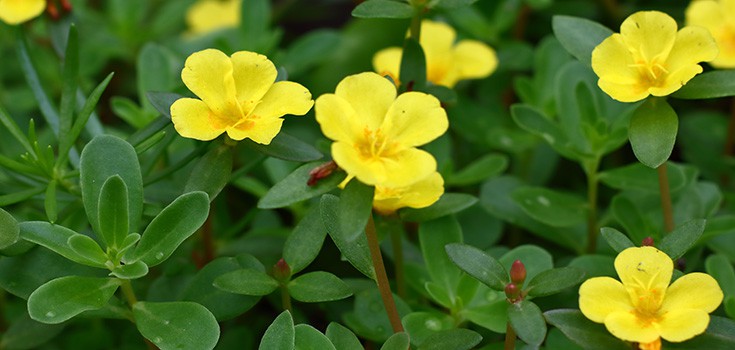Purslane – Just a Weed, or an Unrecognized Health-Boosting Plant?

Purslane, also known as Portulaca oleracea, is considered a common weed to many that may even be growing in your garden right now, without your explicit invitation. It started its cultivation in India and Persia, and spread to the rest of the world. Some cultures pluck it out and throw it away with leaf clippings and other weeds, while others cultivate it specifically to eat as food. Purslane is an aesthetically attractive weed with fleshy leaves and often yellow flowers, but its health benefits are even more desirable.
The seeds of purslane are so powerful they can stay viable in land for up to 40 years – and this is a natural crop – no GMO! It grows in a well-tended garden and in arid climates, often equally as well. This resilient plant poses similar benefits for our immune systems and overall health.
Often called pigweed, Purslane has more beneficial Omega 3 fatty acids than many fish oils! The weed also has one of the highest levels of vitamin A among all leafy green vegetables (1320 IU/100 g, provides 44% of RDA). High Vitamin A foods can help protect us from many types of cancers and helps to boost eye health.
Also in purslane are vitamins C, and B-complex including riboflavin, pyridoxine, and niacin, as well as carotenoids, and trace minerals like iron, magnesium, and calcium.
Furthermore, purslane is full of two different types of betalain alkaloid pigments – a reddish beta-cyanis and a yellow beta-xanthins, which are equally potent antioxidants and anti-mutagens.
With all these nutritional benefits, and the large amounts of money we spend on supplements to better our health, it seems purslane should be elevated from weed status to health-boosting, everyday food. Purslane packs a powerful nutritional punch, for certain.
Warning: Although purslane can be beneficial for humans, the plant is toxic to cats, dogs, and horses. If your pet ingests this plant, contact your local veterinarian or the ASPCA Animal Poison Control Center at 888-426-4435.*
We’ll update this portion of the article as information comes in.

Wow perfect timing for this article, I just pulled some of these “weeds” from my lawn. Now I will let them grow an research them more, but if I were to consume this plant, how would I prepare it safely?
A lady friend I have from Mexico who immigrated here legally 50 some years ago told me of this healthy 'Purslane' and how she explained to her daughter how to cook with it.
At the that time I looked it up and found lots of recipes.
Who would've known otherwise without sites like this to tell society of our ready-made produce garden right in our backyard. We've also got dandelions that are so healthful too and of course if you're lucky enough to have fruit trees.
Where could I purchase "Purslane" or even the seeds to start growing this. I may even have it in my yard, but do not know exactly what it looks like or be able to identify it.
Natural Plantation in Canada. http://www.naturalplantation.com is a good source.
There is a cultivar of Purslane developed to grow larger than the common variety. http://www.johnnyseeds.com/p-5822-goldberg-golden…
Most chickens love purslane. It has more Omega-3 fatty acids than any other land plant (some seaweeds are higher), so throwing purslane in the chicken coop is a great way to boost the omega-3 content of their eggs.
Throw it in some soup or your fresh salad.
Thanks for this information!!! I have this in my yard and garden. Just to be clear I have pulled a plant up similar to this which(smaller version) has a milky white substance coming out of it. I was told by a friend that it is called Milk Weed? Is Milk Weed the same plant? And if not is Milk Weed something a person can consume? Thank you
http://www.homesteadingtoday.com/country-living-forums/plant-tree-identification/406286-purslane.html See Ray’s comment about spurge, a poisonous purslane look alike.
Apart from the slight difference in color ,is there any difference between the wild and farm grown purslane? And are seeds available for planting in ones garden and if so where can I buy them ??
Similar but not the same!
Look at spurge pictures to be able to tell the difference because spurge is toxic!
I wonder what it tastes like? wow .now I’ve idenified 2 useful weeds. purslane, dandilion s for the bees first food and then dandilion jelly with the flower tops, and salad with the young greens.
Very frequent use of purslane in the diet of Crete and of Icaria, where longevity brakes records.